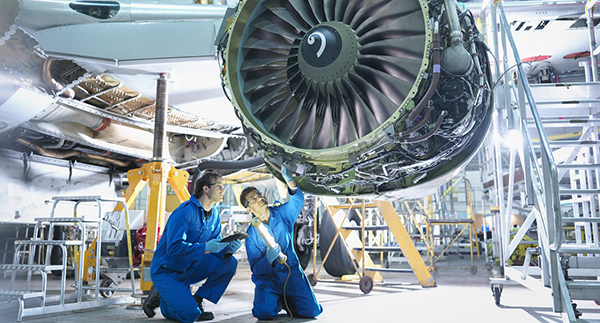Activity in Australia’s mining sector is accelerating, auguring well for exports and the broader economy, according to economic forecaster and industry analyst, BIS Oxford Economics. But with maintenance costs forecast to increase nearly 60 percent over the next five years now is the time to invest in systems to keep expenditure under control.
According to BIS Oxford Economics’ Mining in Australia 2017 to 2032 report, mining exploration, production, and maintenance are all expected to lift significantly through 2018 and beyond. The strong turnaround in prices has boosted miners’ profitability, with maintenance activity to be the biggest winner.

“Maintenance has taken the brunt of cost-cutting efforts in recent years,” said Rubhen Jeya, an economist with BIS Oxford Economics and the report’s author. “With higher utilisation across a much larger post-boom asset base, we expect maintenance activity to rise nearly 60 percent in real terms over the next five years, offering crucial opportunities for contractors.”
For asset owners, controlling maintenance costs will include careful management and coordination of contractors who deliver maintenance services. For their part, contractors will be looking to secure the best maintenance contracts, maximise value to asset owners, and keep their own costs under control.
New technologies – including cloud computing, mobile devices, the Internet of Things (IoT), predictive maintenance, planning and scheduling optimisation, big data, artificial intelligence, and augmented reality – all have a role to play in controlling maintenance costs.
Use Predictive Analytics To Optimise Maintenance
According to ARC Advisory Group research report, 82% of assets have a random failure pattern. In other words, traditional preventive maintenance strategies are essentially ineffective in managing equipment downtime and maximising lifetime.
Not surprisingly, mining companies have been moving from calendar-based preventive maintenance to usage or condition-based maintenance. With sensors able to identify problems, the Internet of Things (IoT) has accelerated this trend. But by far the optimal way to manage the maintenance of equipment and other assets is through predictive maintenance.
Predictive maintenance offers both immediate and long-term reliability benefits and cost savings. When combined with monitoring and asset management systems, it can give mining companies better visibility over their assets, greatly reducing previously uncontrollable challenges such as distance and environment.
Predictive maintenance offers more than the ability to continuously monitor asset performance through sensors such as vibration monitoring. It also requires a predictive engine to process input and automatically provide intelligent responses. Ideally, collected data and responses are captured and processed in an enterprise asset management system, ensuring compliance, effective business intelligence and customer satisfaction.
With an integrated enterprise asset management system and predictive analytics, downtime can be eliminated, efficiency maximised, and a chain of events triggered to optimise the entire process from inventory management to human resources. After comparing historical data with real-time operating data, for example, an alert can trigger a mining organisation’s asset management software to automatically schedule a technician with the right skill set and the right parts to fix the failing asset.
Achieving this level of optimisation requires tying many data sources together such as machine condition data, asset criticality, service levels, spare part supply, availability of service engineers, travel time, weather conditions and more. It’s about being able to pull all this data together and to visualise, automate and optimise decision alternatives through software systems.
Use Artifical Intelligence To Think Outside The Square
While many of the applications for artificial intelligence are only now being explored, in some areas the benefits are already proven. IFS has been using machine learning algorithms and other smart techniques inside IFS Planning & Scheduling Optimization (PSO) to provide optimised schedules for our customers for more than 12 years.
One of the major components in IFS PSO is the Dynamic Scheduling Engine (DSE). The DSE seeks to find the best solution by automatically adapting to specific problems. Usually, it chooses a combination of between two and six algorithms from a possible 35, since combinations generally work better than a single algorithm alone. Because the adaptation is automatically learned, it often finds creative solutions. It is typically better at ‘thinking outside the box’ than humans because it is better at searching through an extremely large number of possible solutions.
When one of our customers, Cubic Transportation Systems, first started using the DSE, it noticed that the system was making different scheduling decisions than human schedulers. There may be three repair jobs, all at the same location, and previously an engineer would travel to this location and do all three jobs. But sometimes, the DSE would only schedule the engineer to do the urgent jobs at that location and then travel elsewhere to another urgent job, leaving the lower-priority jobs to be done later.
Another example that Cubic noticed is that, when an engineer started work, they would often walk straight past a job that needed doing in order to get to other jobs which were more important or where a group of jobs was clustered together or were more appropriate for the engineer. They questioned this initially until it became clear that the DSE was optimising the whole schedule and that an engineer would return to do the original job later.
As a result of the DSE thinking of innovative solutions, Cubic was able to improve its SLA hit rate and increase the availability of working machines by 20 percent, which also enabled them to take on more contracts without recruiting additional staff.
Augmented Reality Will Revolutionise Maintenance
New technologies like augmented reality also have the potential to improve maintenance productivity in the mining industry in the same way that driverless trucks have improved the productivity of haulage operations in recent years.
IFS recently announced the launch of a new proof of concept which integrates the Australian-developed fountx™ augmented reality solution with enterprise data from IFS Applications to boost productivity of industrial engineers. Developed by our innovation think tank, IFS Labs, in collaboration with fountx and its parent company, TAE Aerospace, it has the potential to change the way that companies maintain complex assets.
Unlike wearable consumer technology, fountx is purpose-built for complex industrial environments, preserving the spatial awareness users need to work safely. It comes in two parts: an operator station, comprising a lightweight near-eye headset and wearable computer; and a touch screen expert station used off-site. These allow technicians to perform complex maintenance with an expert looking over their shoulder – virtually.
The proof of concept lets maintenance technicians visualise IFS software data related to the asset they are servicing on the fountx near-eye display. This way, technicians can keep their hands free, with no need for printed job sheets or separate computing devices. They can also record HD images from the fountx camera directly into IFS Applications.
Over the next few years, new kinds of augmented reality technology like fountx will revolutionise how maintenance is performed in the mining industry. In combination with technologies like predictive maintenance, artificial intelligence and planning and scheduling optimisation, the biggest benefits will be achieved in remote environments where maintenance costs are the highest.
Maintenance expenditure is certainly on the increase. The cost-cutting we have seen in the mining industry was always going to be unsustainable as new assets came on stream and production volumes increased. But with a combination of new technologies and enterprise software systems, not all companies will see maintenance costs increase as quickly as industry-wide predictions. And these asset owners and contractors will be better placed than others to increase profitability over the next few years.



